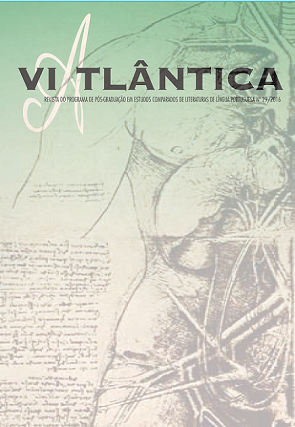As a virus: the salazarism’s disease and its events in Valter Hugo Mãe’s novel: A máquina de fazer espanhóis and Antonio Tabucchi’s novel: Afirma Pereira
DOI:
https://doi.org/10.11606/va.v0i29.107290Keywords:
Valter Hugo Mãe, Antonio Tabucchi, illness, salazarismAbstract
This study aims to analyze the Valter Hugo Mãe’s novel: a máquina de fazer espanhóis in dialogue with the Antonio Tabucchi’s novel: Afirma Pereira. Our comparative method is supported on the thesis that the salazarism – present in both books - can be read, metaphorically, as a disease that affected, in a tragical way, the portuguese social body, creating what came to be called: " fascism of good men". The protagonists of both novels, each in its own way, react differently to the alienating pressures of that " great evil " , whose roots can be clarified in the light of the reflections of Hannah Arendt in The Origins of Totalitarianism and Elias Canetti in Mass and power.
Downloads
Downloads
Published
Issue
Section
License
Copyright (c) 2016 Maria Célia Martirani Bernardi Fantin

This work is licensed under a Creative Commons Attribution 4.0 International License.
Authors who publish with this journal agree to the following terms:
- Authors retain copyright and grant the journal right of first publication with the work simultaneously licensed under a Creative Commons Attribution License that allows others to share the work with an acknowledgement of the work's authorship and initial publication in this journal.
- Authors are able to enter into separate, additional contractual arrangements for the non-exclusive distribution of the journal's published version of the work (e.g., post it to an institutional repository or publish it in a book), with an acknowledgement of its initial publication in this journal.
- Authors are permitted and encouraged to post their work online (e.g., in institutional repositories or on their website) prior to and during the submission process, as it can lead to productive exchanges, as well as earlier and greater citation of published work (See The Effect of Open Access).






















